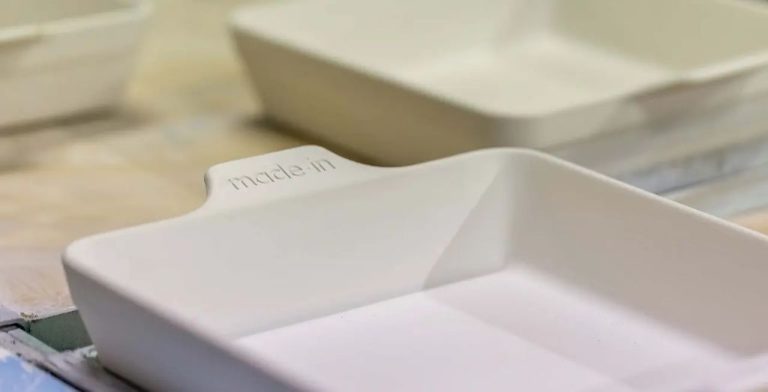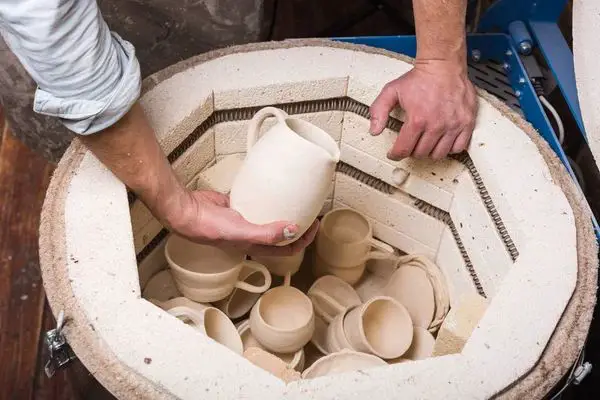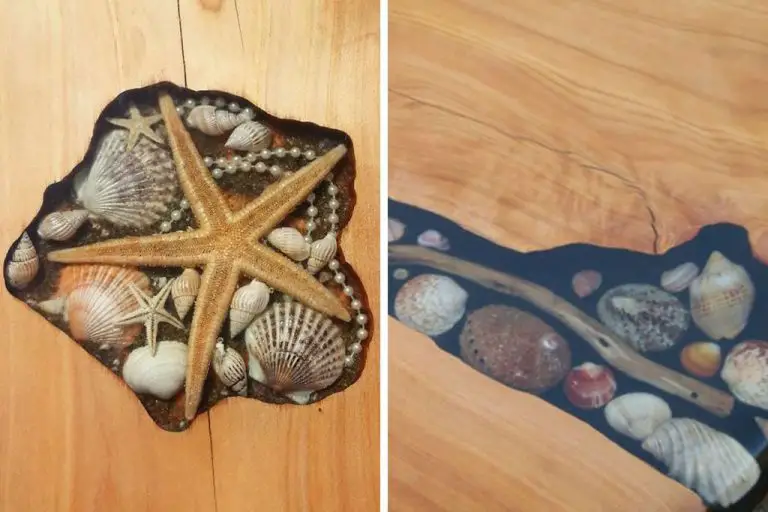How Thick Is The Clay For Hamon?
What is Hamon?
Hamon, also known as temper lines or temper patterns, refers to the visual result of differential hardening when making Japanese swords. It is the wavy or straight line pattern that can be seen along the blade surface after it has been polished. The hamon forms the boundary between the martensitic steel edge and the pearlitic steel sides of the blade.
The purpose of the hamon is both functional and aesthetic. The hardened steel edge allows the blade to hold a sharp cutting edge, while the softer sides provide strength and flexibility to absorb shocks without breaking. The distinct visible line pattern is an artistic expression and display of the swordsmith’s skill in precisely controlling the hardening process.
The practice of differential hardening to produce a hamon originated in Japan sometime around the 9th century CE. Early Japanese swords were modeled after straight, double-edged Chinese jian swords and did not have hamon. As curved single-edged katana blades became popular, hamon effects also emerged as a way to enhance both the beauty and function of the blades.
Clay Properties Needed
The clay used for hamon must have specific properties to work properly. The key characteristics to consider are hardness, composition, and plasticity.
The clay needs to be hard enough to hold a crisp shape on the blade surface during quenching. It cannot be too soft or it will become distorted by the rapid cooling. A high kaolin or fire clay content helps provide hardness when fired.
The composition of the clay affects its workability, adhesion, and ultimately, the visibility of the hamon line. Most clays for hamon contain kaolin for hardness and plasticity, silica for adhesion to the steel, and other fluxes that promote melting during firing. A mix of different natural clays is often used.
The clay must be plastic enough to be shaped into a thin, even layer on the blade prior to firing. It needs sufficient plasticity to conform to the blade shape without cracking or falling off. Adding water helps improve the clay’s moldability during application.
Standard Thickness
The thickness of the clay applied for hamon can range from less than 1 mm up to 3 mm or more. The ideal thickness depends on several factors:
Thinner applications of 1 mm or less are common when doing shallow, small hamon. This allows for finer details and crisp lines. However, the clay can crack more easily at this thickness.
Thicker applications of 2-3 mm are better for larger hamon with deep, dramatic activity. The extra clay provides more insulation against overheating the bare metal. But thicker clay may obscure some finer details.
On average, a thickness of 1.5-2 mm offers a good balance for most hamon. This provides enough insulation for larger hamon while still allowing moderately fine details to come through.
The thickness also depends on the type of clay used and the desired visual effect. A skilled polisher must consider all these factors when applying the clay to create the intended hamon result.
Thickness Considerations
The ideal thickness for the clay layer depends on several factors:
- The hardness of the steel being used – harder steels generally require a thicker clay layer.
- The type of clay – some clays are more viscous and adhesive, allowing a thinner application.
- The desired aesthetic – very intricate patterns may need a thinner clay layer for finer details. Simpler designs can use a thicker layer.
A standard thickness is around 1-2mm. But the clay can be applied in multiple layers for a built-up effect. The key is controlling the thickness to complement the specific steel and intended design.
Too thin, and the hamon may turn out faint or incomplete. Too thick, and finer details can be obscured. Testing on spare blades is advisable to gauge the ideal thickness.
The clay thickness also affects the speed of heating and quenching. Thinner layers heat and cool more quickly. A smith must find the right balance for the steel, clay and aesthetic.
Applying the Clay
Applying the clay evenly and smoothly is crucial for creating a clear, crisp hamon line. Here are some key tools and techniques:
-
Most smiths use a flat wooden or bamboo stick to spread the clay slurry. The stick should have a perfectly straight edge to help apply an even layer.
-
A soft brush can help work the clay into any crevices and detail work on the blade.
-
The blade should be held securely in a vice or clamp. Tilt and rotate the blade to apply the clay from all angles.
-
Apply in several thin layers, allowing each coat to partially dry before adding the next. Multiple thin layers prevent cracking.
-
Work quickly but carefully to get full coverage before the clay dries. Have water handy to re-wet areas if needed.
-
Apply enough clay to get a coating 2-3mm thick. Thinner than 2mm risks an indistinct hamon; thicker than 3mm takes longer to dry.
-
Smooth the entire surface with the flat stick once done to level and compress it.
Proper application results in an even clay coating ready for the critical heating and quenching steps.
Heating and Quenching
Proper heating and quenching of the blade is critical for developing a distinct and beautiful hamon. The clay coating must be heated to the correct temperature before quenching in order to produce the desired effect.
The ideal temperature range is between 1300-1450°F (704-788°C), approaching the upper critical temperature of the steel. Heating above this risks burning off the carbon content. The blade should be heated evenly to avoid an uneven hamon.
For quenching, the most common medium is water at around 60-80°F (15-26°C). Some polishers use warmer water around 90°F (32°C) to soften the steel slightly for easier polishing. The key is to quench fast enough to produce martensite but not fast enough to cause cracking.
The speed of the quench has a direct impact on the hamon. A faster quench accentuates the hamon but risks cracking the blade. A slower quench produces a subtler effect. Mastering the quenching speed takes experimentation and experience.
Inspecting the Result
After quenching, inspect the blade carefully to judge the quality of the hamon. Look at the hamon line and see how it compares to your intentions. A crisp, clean hamon line is ideal. If the line looks smudged or indistinct, the clay may have been too thin or the quench too slow. Also check for an even color transition, as uneven spots can indicate hot spots or cold spots in the quench.
Troubleshoot any issues that come up. An indistinct hamon often means starting over and adjusting the clay thickness or quench speed. Uneven coloring requires carefully reheating problem areas and quenching again. Do not simply re-coat the blade in clay without stripping it first or the new application will not adhere correctly. Patience is key, as the hamon may take multiple tries to perfect.
Other Considerations
In addition to clay thickness, there are some other important factors that affect the hamon.
Polish Type
The type of polish used when preparing the blade can impact the hamon. A finer polish will result in a more refined hamon pattern. A coarse polish may make the hamon less visible. Most polishing is done with various grits of wet/dry sandpaper, progressing to a very fine grit for the best hamon results.
Geometry of the Blade
The geometry of the blade itself can also affect the hamon. Thicker blades generally result in a wider hamon, while thinner blades have a more concentrated hamon. The bevel angle and curvature of the blade will also impact the hamon pattern. These factors should be considered when designing and forging the blade to achieve the desired aesthetic result.
Artistic Possibilities
The application of hamon allows for immense creative expression. Skilled swordsmiths can create unique and distinctive effects by experimenting with different hamon patterns and styles. Some artistic possibilities include:
Unique effects: Hamon lines can form abstract shapes, swirling patterns, straight lines, waves, bubbles, knots, and more. Artists blend these into signature styles. The effects depend on clay thickness, heating method, and quenching techniques.
Creative approaches: Beyond the hamon line itself, artists use various treatments to complement their work. Etching the steel or applying different finishes creates contrast with the hamon. Some introduce gold or silver inlays to highlight certain hamon characteristics. Decorative files, chisels, and other tools add further artistic dimensions.
With an eye for beauty and a depth of technical skill, swordsmiths turn hamon creation into an artform. Their artistic possibilities are as limitless as their imagination and abilities.
Conclusion
When creating a hamon line on a Japanese sword, the thickness of the clay applied is an important factor. As discussed, the standard thickness is around 1-2mm. However, depending on the type of clay used and the intended aesthetic, slight variations can be made. Thicker applications of 3mm or more are sometimes used for dramatic hamon with distinctive shapes and activities. While thinner applications around 0.5mm create subtler effects.
Ultimately, the thickness of the clay impacts the clarity and definition of the resulting hamon. Mastering application thickness is one of the essential skills in hamon creation. Along with proper heating, quenching, and polishing, the thickness of the clay determines the final outcome and beauty of the hamon line on the finished blade.




